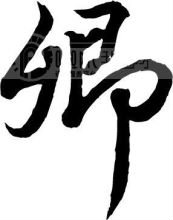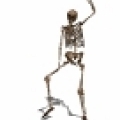Q
how yo balance speaker in perodua myvi
The Perodua Ativa currently offers six exterior color options to suit diverse tastes. There's the pearlescent Glittering Silver, the metallic-finish Granite Grey, the energetic Mystical Purple, the timeless Cobalt Blue, the stylish Lava Red, and the sophisticated Galaxy Black – something to match every buyer's aesthetic preferences.
Beyond its color choices, the Ativa has solidified its position as one of Perodua's top-selling SUVs, winning over Malaysian drivers with its budget-friendly pricing, impressive fuel efficiency, and generous equipment list. A key highlight is its advanced Safety Assist suite, which adds an extra layer of confidence on the road. For owners looking to stand out, official or authorized customization centers offer color personalization options – just be sure to check that any modifications don't void your factory warranty.
Practicality meets style with the Ativa's color design, which isn't just about looks. Perodua has also factored in Malaysia's tropical climate, equipping the paintwork with UV-resistant and anti-rust treatments to keep it looking sharp for years to come.
Special Disclaimer: This content is published by users and does not represent the views or position of PCauto.
Related Q&A
Q
What mileage for MYVI spark plugs?
According to Perodua's official recommendation, the mileage for replacing the spark plugs of the Myvi is usually between 40,000 and 60,000 kilometers. The specific interval depends on the type of spark plugs used in the vehicle and the driving conditions. The original equipment generally comes with ordinary nickel - alloy spark plugs. If you upgrade to iridium or platinum spark plugs, the replacement interval can be extended to 80,000 - 100,000 kilometers.
It's worth noting that if you often experience difficulties with cold starts, unstable idling, or an abnormal increase in fuel consumption, it may be a sign of spark plug aging, and you need to have them checked in advance. The hot and humid climate in Malaysia can accelerate the wear of spark plug electrodes. It is recommended to check the condition of the spark plugs during regular maintenance. At the same time, use original or equivalent - quality accessories that meet the specifications of the Myvi engine (such as the heat range). Inferior spark plugs may lead to a decrease in ignition efficiency and even damage the ignition coil.
For the turbo - charged Myvi X version, since the engine operates at a higher temperature, it is recommended to shorten the replacement cycle by about 20% to ensure optimal performance.
Q
What is the NCAP rating of Perodua Myvi?
The Perodua Myvi has achieved a 5-star rating in the ASEAN NCAP (ASEAN New Car Assessment Programme) tests. This result showcases its excellent performance in terms of safety features. The specific test items include adult occupant protection, child occupant protection, and safety assist systems. The Myvi is equipped with multiple safety features such as dual airbags, an ABS anti - lock braking system, an EBD electronic brake - force distribution system, and a Vehicle Stability Control (VSC) system. All these features have helped it score high in the crash tests.
For Malaysian consumers, choosing a vehicle with a high NCAP rating is very important as it is directly related to the safety guarantee during daily driving. The rating criteria of ASEAN NCAP are similar to those of other NCAP organizations globally, but it pays more attention to the actual road conditions and driving habits in Southeast Asia, thus having greater regional reference value.
Apart from the Myvi, there are also other models from different brands in the Malaysian market that have achieved a 5 - star rating. When purchasing a vehicle, consumers can compare the safety features and test results of different models to ensure they select the vehicle that best suits their needs.
Q
How many spark plugs are in Myvi?
The Perodua Myvi has achieved a 5-star rating in the ASEAN NCAP (ASEAN New Car Assessment Programme) test, which showcases its excellent performance in terms of safety features. The specific test items include adult occupant protection, child occupant protection, and safety assist systems. The Myvi is equipped with multiple safety features such as dual airbags, an ABS anti-lock braking system, an EBD electronic brake-force distribution system, and a Vehicle Stability Control (VSC) system, all of which have earned it high scores in the crash tests.
For Malaysian consumers, choosing a car model with a high NCAP rating is crucial as it directly relates to the safety assurance in daily driving. The rating criteria of ASEAN NCAP are similar to those of other NCAP organizations globally, but it pays more attention to the actual road conditions and driving habits in Southeast Asia, making it more regionally relevant. Besides the Myvi, there are other car models from different brands in the Malaysian market that have also received a 5-star rating. When purchasing a car, consumers can compare the safety features and test results of different models to ensure they select the vehicle that best suits their needs.
Q
Is myvi a reliable car?
The Myvi is a reliable car. Judging from its sales performance, the Myvi has been the best - selling car model in Malaysia from 2005 to 2014. As of now, its cumulative sales have reached 1,491,765 units. In 2024, it remains the best - selling hatchback in Malaysia and is very popular among consumers. In terms of product characteristics, it offers high cost - effectiveness. The price ranges from RM 46,500 to RM 59,900, and it comes with a rich set of features. It has low fuel consumption, being equipped with a 1.3L or 1.5L Dual VVT - i engine, and the official minimum fuel consumption is 4.5L per 100km. In terms of space, as a B - class hatchback, it has reasonable body dimensions. The rear seats can be folded down, making it highly practical. In terms of safety, the current model is equipped with advanced safety features such as Perodua Smart Drive Assist (PSDA). So, whether it's the market's recognition or its own characteristics, they all indicate that the Myvi is a reliable car.
Q
How much is myvi fuel consumption?
As one of the most popular national cars in Malaysia, the fuel economy of the Perodua Myvi varies depending on the model and driving conditions. According to official data, the fuel consumption of the latest Myvi in mixed conditions is about 5.3 to 5.6 liters per 100 kilometers (for the 1.5L engine version), which means it can travel about 18 to 19 kilometers per liter of gasoline. The 1.3L engine version may be even more fuel - efficient. The actual performance is affected by driving habits, road conditions, and the vehicle's maintenance status. For example, frequent rapid acceleration or driving in congested urban areas can significantly increase fuel consumption.
It is recommended that car owners regularly check the tire pressure, replace the air filter, and use the recommended engine oil to optimize fuel economy. Additionally, the Myvi has a fuel tank capacity of 36 liters, and theoretically, it can have a cruising range of about 600 kilometers when the tank is full.
For car owners who want to save more fuel, they can try some economical driving techniques such as smooth acceleration and anticipating road conditions to reduce sudden braking. These methods are applicable to all fuel - powered vehicles, which can not only reduce the cost of using the car but also reduce mechanical wear.
Q
How many Litres is a MYVI fuel tank?
The fuel tank capacity of the Perodua Myvi varies slightly depending on the model. The first - generation Myvi (2005 - 2011) had a fuel tank capacity of 40 liters. For the second - generation (2011 - 2017) and third - generation (2017 to present) Myvi, the fuel tank capacity increased to 36 liters for the 1.3L models and 40 liters for the 1.5L models. This design is to balance the fuel - economy requirements of different engine displacements. Malaysian car owners should note that the fuel tank capacity directly affects the driving range. Usually, a 1.5L model can travel about 500 - 600 kilometers on a full tank under combined driving conditions, which specifically depends on driving habits and road conditions. It is recommended that car owners regularly check the fuel system and maintain good driving habits to optimize fuel consumption. Meanwhile, it should be noted that the Myvi only needs to use RON95 gasoline and there's no need to use higher - grade fuel. This can not only meet the daily commuting needs but also save fuel costs.
Q
How many cylinders are in the MYVI?
As one of the most popular national cars in Malaysia, the engine configurations of the Perodua Myvi vary according to different years and versions. Currently, the mainstream models are equipped with two types of Dual VVT - i four - cylinder naturally aspirated engines, namely the 1.3L (1NR - VE) and 1.5L (2NR - VE). Therefore, all Myvi models feature a four - cylinder design. This four - cylinder layout ensures smooth power delivery while taking fuel economy into account, making it highly suitable for the urban road conditions in Malaysia.
It's worth mentioning that four - cylinder engines, due to their simple structure and low maintenance costs, are widely used in B - segment models in the local market. For example, the Proton Saga and Honda City also adopt a similar layout. The 1.5L version of the Myvi can output 102 horsepower and 136 Nm of torque. Coupled with its lightweight body design, it can offer a well - balanced performance whether driving on the congested streets of Kuala Lumpur or cruising on the highway.
For readers who want to learn about engine technology, they can note that the Dual VVT - i system used in the Myvi can intelligently adjust the valve timing. This technology shared by Toyota helps to improve fuel efficiency by about 15%. That's why the Myvi has remained one of the most fuel - efficient cars in Malaysia for years.
Q
Are Myvi and vios the same engine?
Some models of the Myvi and the Vios use the same engine. Daihatsu and Perodua have a joint - venture engine production plant in Negeri Sembilan, Malaysia, which provides power for multiple models including the Vios. Some models of the Vios and the Myvi are equipped with the 1.5L Dual VVT - i engine. This engine features high efficiency, reliability, and economy. Although its power is not extremely strong (the official 0 - 100km/h acceleration time of the Myvi 1.5 is 10.2 seconds), its low fuel consumption and durability are well - loved by consumers. However, these two cars have different positioning and market targets. Even if they share the engine platform, there are differences in vehicle tuning, configuration, and the overall driving experience.
Q
What kind of gearbox is Myvi?
The Myvi is equipped with a Dual Mode CVT (D-CVT) transmission, which is a dual-mode continuously variable transmission. Compared with traditional CVT transmissions, it has an additional gear for high-speed driving, which helps the vehicle achieve better fuel efficiency.
In daily driving, this transmission drives the vehicle in CVT mode. Thanks to the operation of the steel belt, the vehicle moves smoothly and linearly, enhancing comfort. What makes the D-CVT special is that it automatically switches to the gear mode when driving at high speeds. Different from CVT transmissions of other brands, when driving at high speeds, the engine speed of vehicles with ordinary CVT transmissions will increase, the engine noise will get louder, and the fuel consumption will rise. Moreover, the power will decline after exceeding the maximum horsepower speed. However, after the gear of the D-CVT engages, the engine speed decreases, allowing the engine to maintain a reasonable speed and providing the vehicle with continuous and abundant power.
Q
Does Myvi use CVT?
Yes, the Perodua Myvi does use CVT (Continuously Variable Transmission) technology in some models, especially the newer ones. For instance, the third-generation Myvi, launched in 2017, and its subsequent versions are equipped with D-CVT (Dual Mode Continuously Variable Transmission) to offer a smoother driving experience and better fuel efficiency. CVT technology optimizes engine performance through continuously variable gear ratios. Compared with traditional automatic transmissions, it can adapt to driving conditions more flexibly, thereby enhancing overall driving comfort. However, earlier Myvi models may have used a traditional 4-speed automatic transmission. So, whether a specific model is equipped with a CVT needs to be confirmed based on the model year and configuration. For Malaysian consumers, the advantages of CVT lie in its smoothness and fuel - saving performance during city driving, which is very suitable for the common local traffic conditions. But if you're looking for more direct power feedback, some drivers may prefer the manual transmission version. If you're considering buying a Myvi, it's recommended to check the official specifications or consult a dealer to confirm the transmission type. You can also take a test drive to see if the actual performance of the CVT meets your driving preferences.
Popular Cars
Model Year
Car Compare
Car Photo
Latest Q&A
Q
What does engine capacity refer to?
Engine Capacity refers to the total volume of all cylinders inside the engine, usually expressed in cubic centimeters (cc) or liters (L), such as 1.5L or 1500cc, It directly reflects the total amount of air and fuel mixture that the engine can inhale and compress in a complete cycle. A larger engine capacity usually means higher power output because more fuel and air participate in combustion, producing stronger explosive force to push the piston. However, engine capacity is not the only factor determining performance. Turbocharging, fuel injection technology, etc. can also allow small displacement engines to perform close to or even better than large displacement engines. In addition, engine capacity also affects fuel consumption and road taxes. Although large displacement engines have abundant power, their fuel consumption is relatively high, and they may need to pay higher annual road taxes, while small displacement engines are more economical and suitable for daily commuting. When choosing a vehicle, You can balance the relationship between engine capacity and fuel economy according to your driving needs.
Q
How do I find engine capacity?
To find your vehicle's engine capacity, the easiest ways are to check the owner's manual or the engine bay sticker – you'll usually see it clearly marked as something like 1.5L or 2.0T. Another option is to look at your vehicle registration card (Geran) or check the JPJ website for detailed specs, where the engine size will be listed.
Engine capacity is measured in liters (L) or cubic centimeters (cc), with 1.0L equaling 1000cc. It tells you the total volume of all cylinders and gives a rough idea of power and fuel efficiency. Generally, bigger engines deliver more power but may drink more fuel.
That said, performance isn't just about size – tech like turbocharging and fuel injection also plays a big role. If you're mainly commuting, a smaller engine could be the smarter pick, while drivers who want more punch might prefer a larger or turbocharged setup.
Still unsure? Your best bet is to call an authorized service center for the exact specs.
Q
How many cc is a 1.2 litre engine?
A 1.2L engine has a displacement of 1,200cc—since one liter equals 1,000 cubic centimeters (cc), simple math does the trick. Engine displacement measures the total swept volume of all cylinders, serving as a key indicator of power output. Generally, bigger displacement means more muscle, though at the cost of higher fuel consumption.
In our market, 1.2L engines are commonly found in budget-friendly compact cars, striking a solid balance between fuel efficiency and adequate pep for city driving. But here’s the catch: While displacement matters, real-world performance hinges on engineering tricks like turbocharging or direct injection—tech that can squeeze extra power from small engines while keeping thirst for fuel in check.
If fuel economy tops your checklist, a 1.2L powertrain deserves a look—just don’t skip the test drive. Numbers tell part of the story; how it *feels* on the road tells the rest.
Q
How many cc is a V8 engine?
The displacement (cc) of a V8 engine isn't a fixed number—it varies based on the vehicle model and manufacturer's design. Typically, you'll find them ranging between 4.0L and 6.2L, which translates to roughly 4000cc to 6200cc. Classic American muscle cars, for example, often pack a 6.2L (6200cc) V8, while some high-performance sports cars or luxury models might use a smaller 4.0L (4000cc) turbocharged V8.
Thanks to its symmetrical eight-cylinder layout, a V8 delivers both raw power and smooth acceleration, making it a favorite for drivers who crave performance or that big-displacement thrill. But remember, displacement isn't the only factor in power output. Modern tech like turbocharging, direct injection, and variable valve timing can squeeze out more efficiency and horsepower from even a smaller V8.
With tighter emissions regulations, many automakers are now exploring hybrid systems or downsized V8s to balance performance and eco-friendliness. Going forward, V8 development will likely focus more on tech upgrades than just upping displacement.
Q
What is the best engine capacity?
Choosing the right engine displacement depends on your personal needs and driving habits. Generally, a 1.5L to 2.0L engine strikes a good balance between power, fuel efficiency, and maintenance costs—making it ideal for daily commutes and family use. These engines are tried-and-true, easy to service, and relatively economical on fuel.
If you frequently take long trips or crave stronger performance, engines above 2.0L deliver better acceleration and highway stability, though at the cost of higher fuel consumption and road tax. Meanwhile, small turbocharged engines (like 1.0L or 1.2L turbos) have gained popularity in recent years. They offer near-equal punch to larger engines while sipping less fuel and keeping tax bills low—perfect for city driving or budget-conscious buyers.
Hybrids and EVs, on the other hand, sidestep traditional displacement concerns altogether, relying on electric motors for efficiency. As tech evolves, raw displacement may matter less than overall energy effectiveness in the long run.
View MoreRelated News

Donald Trump praised Malaysia's adorable little car, Perodua Myvi received acclaim
LienDec 9, 2025

Since Its Launch in 2005, the Perodua Myvi has Cumulatively Sold Over 1,559,000 Units in 20 Years
WilliamMay 13, 2025

Perodua Myvi : A Value Choice for Worry-Free Car Purchases
LienMar 25, 2025

Own Perodua Myvi for less than RM 60,000: The best choice for city commuting?
LienOct 16, 2024

Perodua Traz receives ASEAN NCAP five-star safety rating, surpassing Toyota Yaris Cross
RobertDec 18, 2025
View More


















Pros
Cons